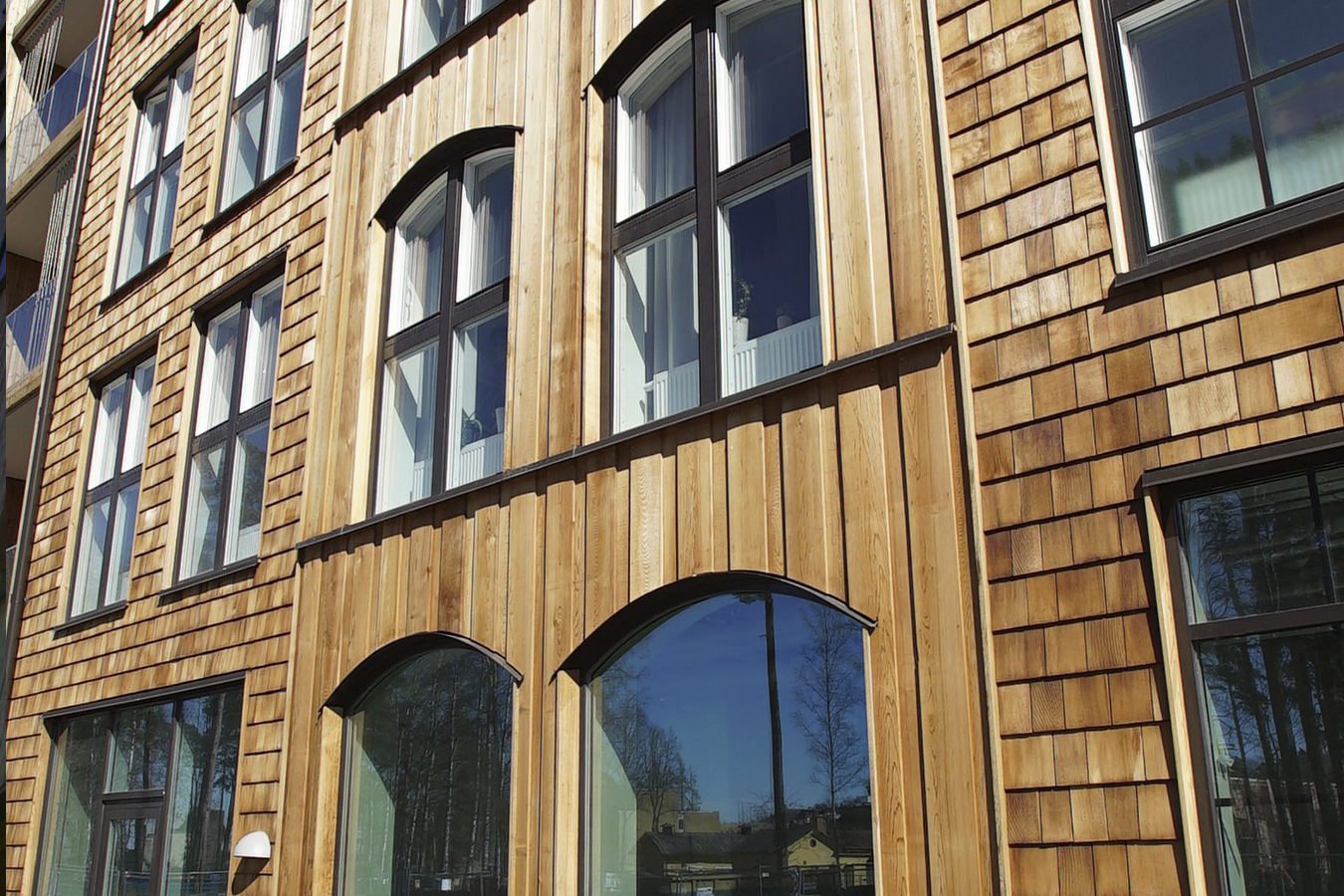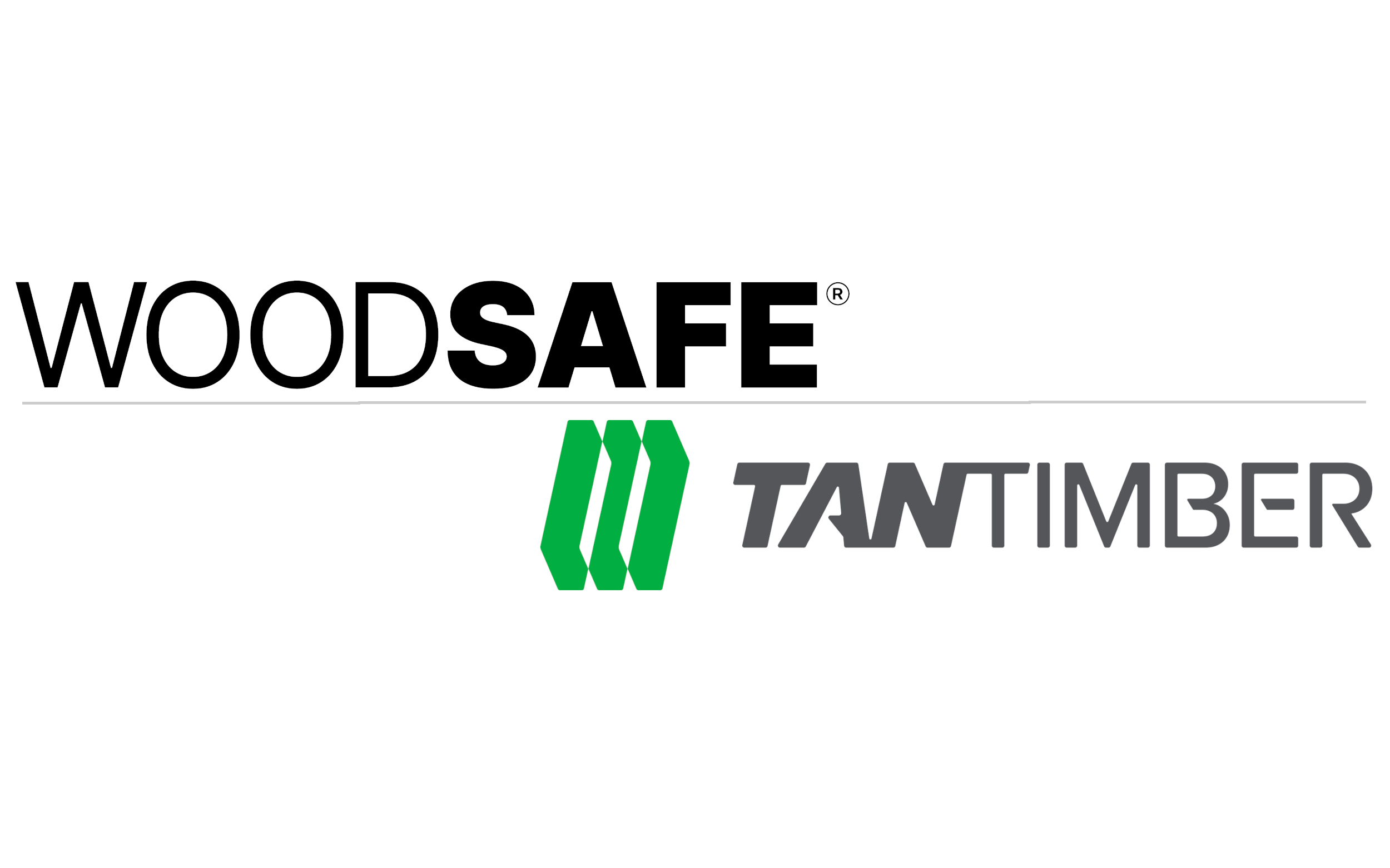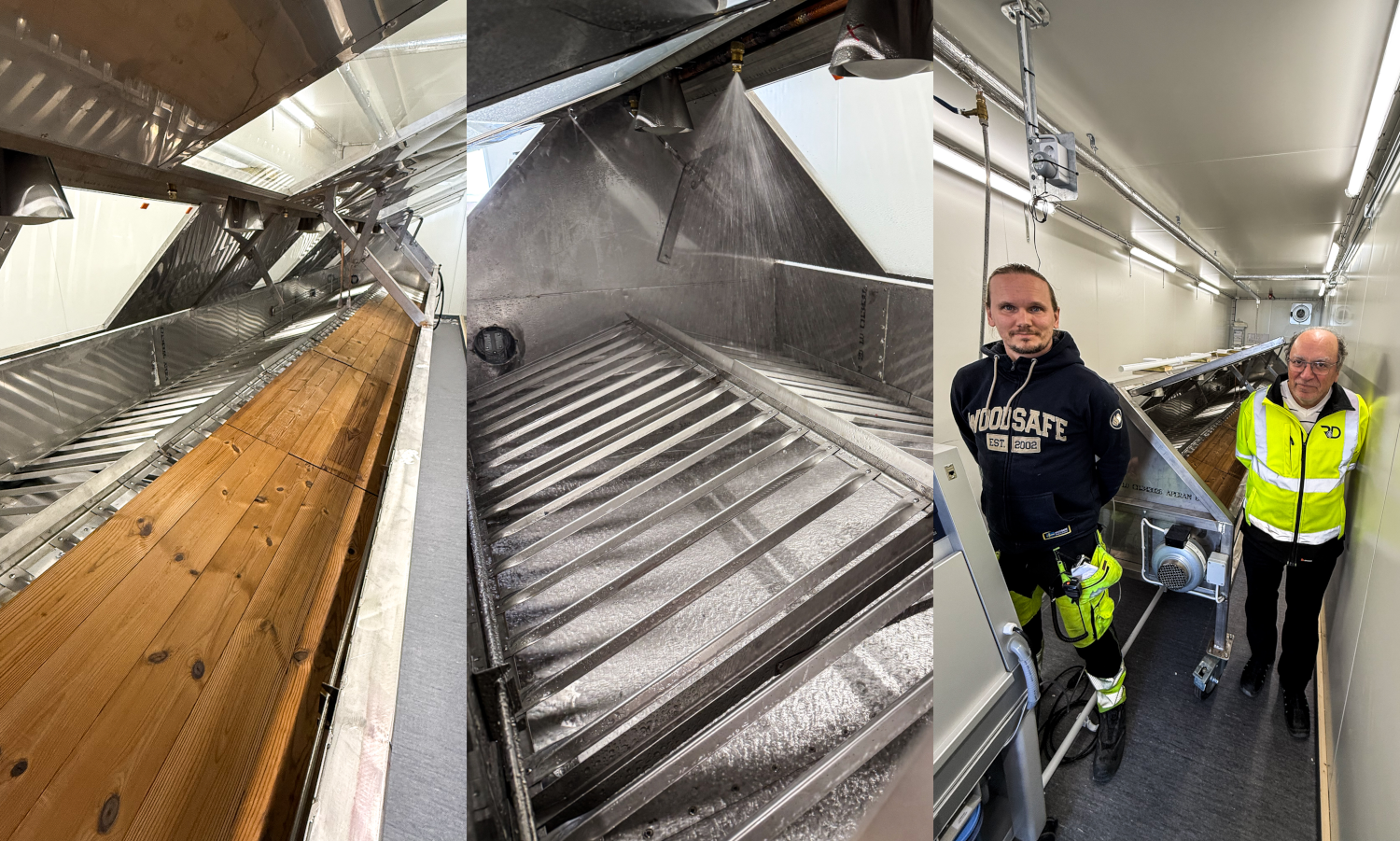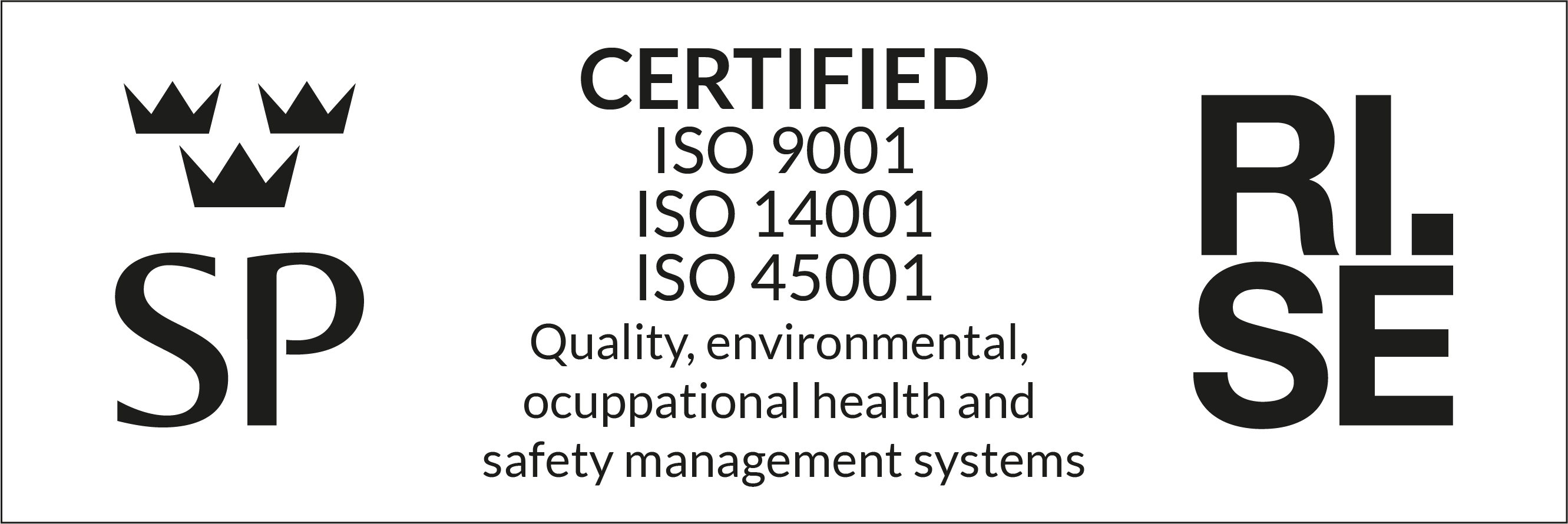Euro class system
It is based on harmonization and is implanted in the member countries' national building regulations. The European classification standard EN 13501–1:2018 divides building materials into seven main classes with regard to the material's fire behavior: A1, A2, B, C, D, E and F where wood can be classified from B to F. In addition to the fire class, the material is also classified regarding smoke development (s1, s2, s3) and the formation of burning droplets/particles (d0, d1, d2).

Fire test report is not a certifying document of the product
In sequence: the product must be sampled – impregnated – sampled – testing EN13823 – ISO 11925 – classification EN13501-1 – review – CE marking according to EN14915, Annex ZA – AVCP system 1 – continuous inspection and control.
Now the product can be placed on the market as CE marked with the associated performance declaration.
Fire properties are approved based on classified mounting conditions
Unfortunately, this is a question of knowledge that many people do not consider. If a wooden product is assembled without an air gap, this does not mean that the same wooden product meets the requirements with an air gap. The same applies to sparse panels, where distance, access to oxygen and the actual exposure to the effects of fire are very important for the course of the fire.
Be sure to check the performance declaration with the condition of your wooden panel's installation conditions.
Tip from Woodsafe Timber Protection AB
For years, untreated wood has been considered D-s2,d0 even if the wood panel has been surface treated. In connection with market control in Norway, it was established that hardly any traditionally painted wooden panels met the requirements for D-s2,d0.
This resulted in the institutes in Denmark as well as in Norway, Sweden and Finland being showered with material from the manufacturers of wood and paint, which were to be tested according to EN13823 (reaction to fire). After many months of testing and development of color systems, the majority of colors have not passed classification according to D-s2,d0 and have been replaced by new systems.
But there is another problem worth mentioning. Modified wood, for example heat-treated, oil-impregnated wood, silicon-treated, impregnated with residual products from the sugar and corn industry, acelytization and more, have been shown to burn extremely well to the point of not even receiving a classification as the material shows numbers within the framework of Euroclass F. In those cases that is intended to use modified products with basic requirements D-s2,d0.
Always request third-party documentation that proves the properties are D-s2,d0. In practice, the supplier can issue the declaration of performance itself for materials falling within the scope of AVCP system 4, but this only applies to untreated wood. Not surface-treated and modified wood.
Before buying traditional paint to paint wood panels, always check that the paint meets the requirements of D-s2,d0. The same applies to modified wood, request a performance declaration where fire properties must be declared.
Remember that:
Industrially impregnated materials are always subject to mandatory requirements for CE marking and performance declaration when Euroclass B and C are marketed. Fire protection impregnated wood products without CE marking may not be marketed nor used according to the EU's construction product regulation 305/2011.
- Some processing of wood for better resistance can give the wood deteriorated properties to resist fire, which can result in the wood falling within the framework of Euro class F.
- The highest classification wood can achieve is euro class B with additional index -s1 and -d0. It is then written as B-s1,d0.
- Product with performance C-s2,d0 has a lower performance than Euro class B, but higher than the wood's own performance D-s2,d0 (CWFT).
- The highest classification of wood is B-s1,d0. Index values - s, - and - d are additions that indicate the development of little or a lot of smoke and the presence of burning particles and droplets.
- As for s-values, - s1 indicates the lowest smoke development. It is the one that is always prescribed indoors.
- It is important to check whether the product's performance includes an air gap or only mounting directly against the substrate.
EURO CLASS B
EURO CLASS B
For wood, the highest performance is Euroclass B with the addition -s1, d0 (B-s1,d0). Certain types of wood have natural properties which make it difficult to pass the additional index for smoke -s1, as natural substances such as resins actively contribute to fire development.
It is important to check that the mounting conditions correspond to the specified fire class. This is not always clearly stated in the performance declaration. If this is the case, always request clarification or consult with an expert fire consultant or Woodsafe support department +46 10-206 72 30.
EURO CLASS C
EURO CLASS C
A lower class than Euroclass B which is used in spaces with a lower occupancy class and sometimes in combination with sprinklers. Some types of wood can reach Euroclass C without having to be fireproofed, but these are mainly tropical types of wood with very high density, not common types of wood such as pine, spruce, birch and others.
It is important to check that the mounting conditions correspond to the specified fire class. This is not always clearly stated in the performance declaration. If this is the case, always request clarification or consult with an expert fire consultant or Woodsafe support department +46 10-206 72 30.
EURO CLASS D
EURO CLASS D
The natural performance of the wood provided that the wood has not been modified or finished with paint.
EURO CLASS F
EURO CLASS F
Wood panels that are painted with common paint systems often end up in Euro class E as well as modified wood types. Among other things oil-impregnated wood panel can easily end up in Euroclass F which is an undefinable class.
Euro class table
| Smoke class | Burning particles | Non-flammable | Product examples | |
|---|---|---|---|---|
| A1 | - | - | X | Stone, glass, steel |
| A2 | s1, s2 or s3 | d0, d1 or d2 | X | Plasterboard (thin paper), mineral wool |
| B | s1, s2 or s3 | d0, d1 or d2 | - | Plasterboard (thick paper), flame retardant wood |
| C | s1, s2 or s3 | d0, d1 or d2 | - | Wallpaper on plasterboard, flame retardant wood |
| D | s1, s2 or s3 | d0, d1 or d2 | - | Wood and wood-based boards |
| E | - | - or d2 | - | Some synthetic materials, painted wood, modified wood |
| F | - | - | - | Painted wood, modified wood |
| Requirements according to SBI | Small flame | FIGRA W/s | |
|---|---|---|---|
| A1 | - | - | - |
| A2 | X | - | ≤ 120 |
| B | X | X | ≤ 120 |
| C | X | X | ≤ 250 |
| D | X | X | ≤ 750 |
| E | - | X | - |
| F | - | - | - |
SBI = Single Burning Item, EN 13823, main method for surface materials except floorings.
FIGRA = FIre Growth RAte, most important parameter for fire class according to the SBI method.



